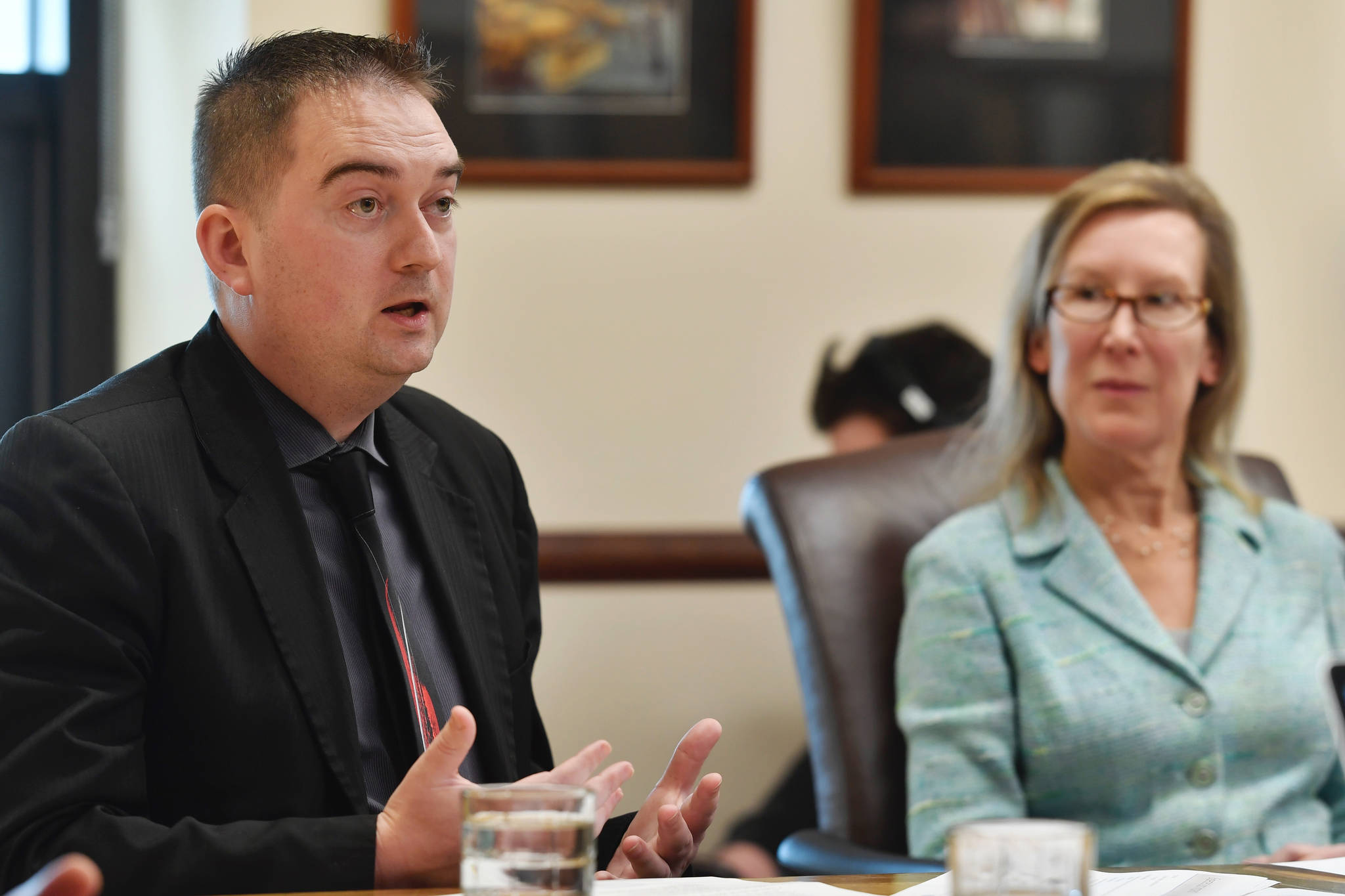No matter which budget solution the Legislature and Gov. Mike Dunleavy approve, there will be negative consequences for Alaskans. That was one of the messages delivered by the state’s chief economist, Ed King, Wednesday at the Capitol.
King was not able to get through his entire presentation on the economic effects of Dunleavy’s budget during the Senate Finance Committee meeting. King made his way through seven of 23 slides before a barrage of questions from the committee members prevented him from moving further.
Later during a press conference, King said a solution must be implemented because the state’s deficit will persist. But each solution has its drawbacks.
[Volatile oil market prompts conservative forecasts]
If government spending is reduced, then jobs will be lost and services will be lowered.
If taxes are raised, there will be lost economic activity and a lower standard of living.
If the Permanent Fund Dividend is cut, then there will be lost economic activity and a lower standard of living.
If assets are depleted, then there will be lower future earnings and bigger problems in the future.
The Dunleavy administration is proposing the first option, and job losses are inevitable, King said.
• Up to 1,000 state jobs could be lost, depending on how the Dunleavy administration’s privatization efforts fare.
• Up to 3,000 jobs could be lost in public schools, depending how the state’s 53 school districts approach the problem.
• Up to 1,500 jobs could be lost at the University of Alaska, and that largely depends on how the board of regents decides to implement cuts.
But how many more jobs could be lost as a result of the budget cuts? The Institute of Social and Economic Research, or ISER, has estimated that 14,272 more jobs would be lost in Alaska. This estimate is based on a study saying for every $100 million taken out of the economy, 892 jobs are lost (with $1.6 billion in cuts, 892 is multiplied by 16 to reach 14,272).
King argued this number is likely much higher than what would actually occur. Part of this is because full Permanent Fund Dividend of $3,000 should stimulate the economy and increase the demand for jobs. If Senate Bills 23 and 24 are passed, providing Alaskans with the payback dividend during the next three years, that stimulus could be larger.
King also said fiscal stability in the government is certain to attract more investment in Alaska and subsequent jobs. However, the length of time before new investment is attracted is unknown.
Department of Revenue Commissioner Bruce Tangeman, who was also at the press conference, was skeptical of ISER’s estimate. He pointed out that employment in Alaska did not see a drastic rise in jobs as the state’s operating budget grew by $5 billion between 2004 and 2014. Nor did Alaska see a dramatic decrease in jobs — it should have lost about 30,000 jobs by ISER’s estimates — since 2014. The state has cut about $3 billion from its operating budget since 2014.
• Contact reporter Kevin Baird at 523-2258 or kbaird@juneauempire.com. Follow him on Twitter at @alaska_kev.

